5 Ways to Extend your Growing Season (and grow more in your garden)

How to Extend your Growing Season
What you plant and where you plant it is key to getting a longer season. So here are our top 5 tips for how to keep growing all year long.
- Choose the right plants
- Plant seeds at the right time
- Warm the Soil before planting
- Look for microclimates
- Mix your planting up
1) Choose the right Plant Variety
To extend your garden season choose wisely as not all seeds are equal. If you look carefully at the wall of seeds in your Garden Centre you will see that some have been carefully bred to be planted early or late.

Taking Broad Beans as an example some, such as Super Aquadulce or The Sutton, can be planted in Autumn and left to over-winter for a harvest as early as May.
If you want to over-winter seeds then a plant house is a neat way to achieve this without using your windowsills. And the Light-Booster Plant House was designed specifically for early season planting. It gives you space to plant your seeds in Autumn and leave them to their own devices over winter.
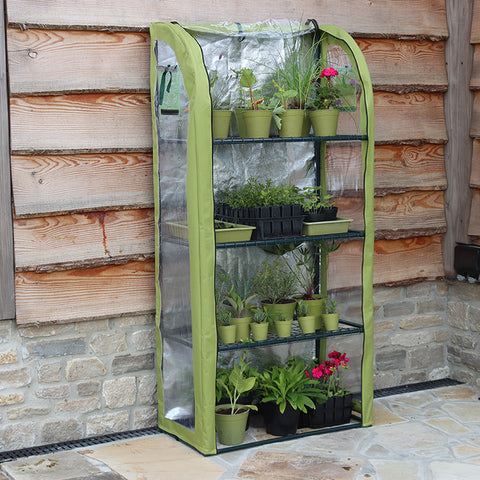
But it also has a reflective silver backing to increase the light reaching the plant so that you can start planting earlier. This is especially key when days are short and light levels are low early and late in the year. Without this extra light seedlings will become leggy and less resistant to pests, diseases and changes in temperature.
2) When to Plant Seeds
Plant little and often - this is called succession planting and is another way to extend your gardening season. Stagger your seed planting, so instead of planting the whole packet of seeds, plant enough to fill your bed and then 2 to 3 weeks later repeat. This reduces wastage as you willnever get a glut of one particular crop if you practice succession planting.
For instance, planting Rocket every few weeks from Spring to Autumn will ensure a continuous supply throughout the season. Cold-tolerant and quick-maturing crops work particularly well for succession planting.
Don't forget crop rotation...
Remember to rotate the crops when you make repeat plantings. Don’t put the same crop, or related family members, in the same place each year. This will allow the soil to recover and also prevent particular pests and diseases, which can live in the soil, from infecting your next sowings.
3) Warm the Soil prior to Planting
The main factor delaying planting and/or seed germination is the temperature of the soil.
The minimum temperature for seed germination is 7°C (45°F)
But the ideal temperature is nearer 10°C (50°F) for cool season crops like broad beans, spinach kale, onions.
If you are growing warm weather plants like tomatoes, peppers and basil then a soil temperature of 15°C (60°F) is your minimum although tomatoes would be happier at 18°C (65°F) to 21°C (70°F).
So, covering the soil so that it does not freeze is a great way to start planting earlier. Especially important if you are one of those gardeners who slams their seeds in as soon as their Christmas dinner is eaten. Or if you have you been bitten by having weak and leggy seedlings spilling from every windowsill waiting for the last frost to pass. How you warm the soil depends on how you are growing – in rows, in beds or as individual plants.
How to Pre-warm the Soil
A few weeks before your plants are ready to go into the ground – place the plant protection such - see below for options - over the intended planting position. This pre-warmed soil will allow you to plant earlier and give you up to 6 weeks longer on your season.
Then you can either transplant your seedlings out or plant your seeds direct. Then re-cover, and the plant protection will trap heat from the sun, protect the growing plants and keep the soil warm.
Fleece Tunnels for Growing in Rows
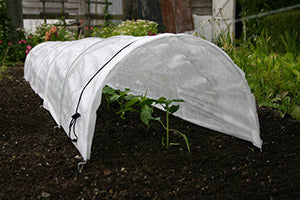
For growing vegetables in rows a tunnel is the perfect solution. The Easy Fleece Tunnel and the bigger Giant Easy Tunnel version simply concertina out. No messing about with bits of blue pipe and at the end of the season fold back into the original packaging and hang neatly in the shed ready for next year.
Cold Frames or Cloches for growing in small beds
Cold Frames or Kitchen Garden Cloche are basically minaiature greenhouses. You can use them for over-wintering seeds or place them over a vegetable bed.The difference between them is that the Cold Frame can be zipped open the Kitchen Garden Cloche is simply lifted off. You can also use individual Victorian Bell Cloches to prepare for and nurture individual plants.
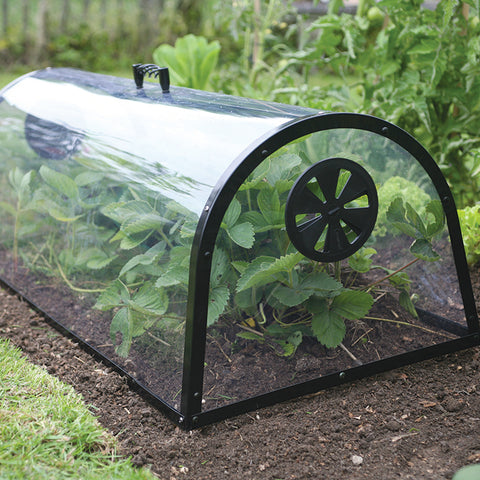

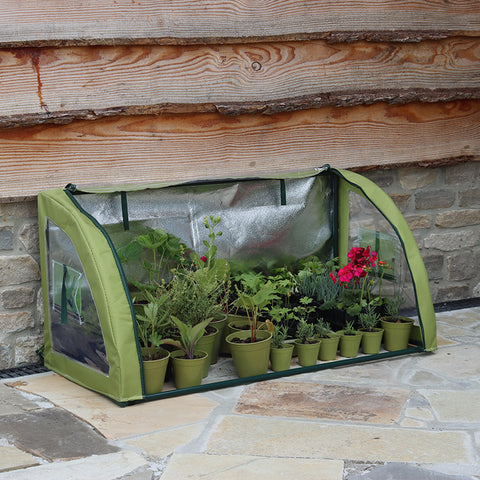
Whichever you are using, place it over you garden beds to trap heat from the sun, prevent the soil from freezing, and keep your seedlings safe from the ravages of the weather.
Fleece Blanket for growing in large beds
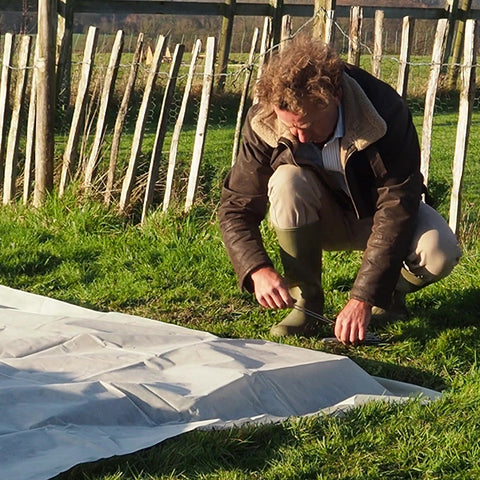
Spread the Fleece Blanket over a whole bed and secure with ground pegs to bring up the soil temperature ready for planting. Then once your seedlings are in, place the blanket back over them to prevent squirrels, rabbits and pigeons feasting on the young plants. The porous material will allow light and rain through and trap the heat to give them the ideal growing environment.
4) Look for Microclimates
Even within a garden there are areas that work better for some plants than others. A brick wall or a dip in the ground could create a little “microclimate” that differs from the rest of the garden and could spell success of failure.
To take advantage of microclimates, plant autumn crops near walls that absorb and radiate heat or next to hedges or borders that block prevailing winds. Choose south facing slopes for the best sun exposure - key when light levels are low. Avoid frost pockets - hollows and deep shaded areas that don’t get the sun where frost lingers.

Create your own little pocket of warmth with a carefully placed Raised bed. Not only can you choose a suitable spot sheltered from wind but because they sit above ground level the soil in them warms faster than in ground beds. So it is ready for planting earlier in the spring and stays warm later in autumn to extend your growing season without trying.
Another benefit of planting in raised beds is that they are easy to cover with cold frames or cloches, to both warm the soil quicker and extend the season even more.
5) Mix your Planting up
Extend your harvest season by inter-cropping - that is planting fast-growing crops in between slow-growing ones. The fast growers will be done by the time the slow growers are big enough to start to spread out. This doesn’t so much extend the season as makes your vegetable garden more productive and allows you to grow more in the time you have.
We have monthly growing guides to help you make the most of your garden year round - here is What to Plant in February to start you off.
More Posts
-
3 Vegetable Plants to Always Plant Together - Three Siste...
What is the Three Sisters Planting Method? The Three Sisters Planting Method is an ancient practice dating back to almost three hundred years ago....
Read More -
Is the 'No Dig' method of gardening right for me?
What is No Dig? Put simply ‘No dig’ is exactly that - a means of gardening without digging over the plot each year. It is a a gardening method t...
Read More -
5 common Tomato Growing Mistakes (and how to avoid them!)
Tomato plants are often one of the first plants you try as a child. But despite a lifetime of growing them its easy to make some of these tomato g...
Read More




Comments
0 Comments
Leave a Comment